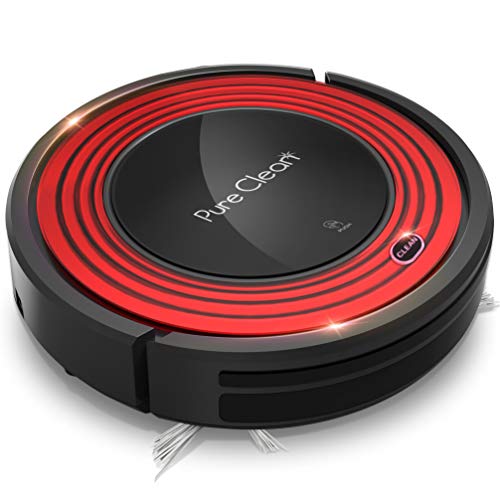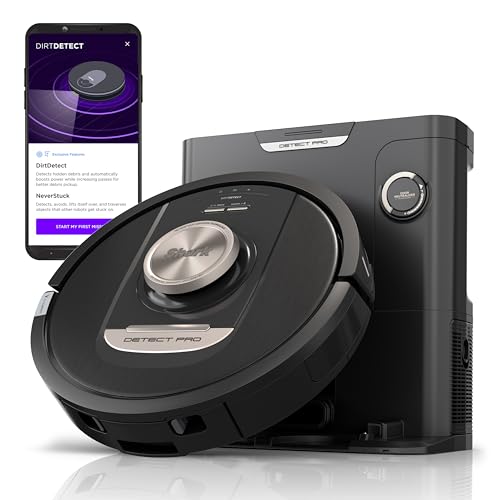13 Things You Should Know About Robot Vacuum And Mops That You Might N…
페이지 정보

본문
 Robot Vacuum and Mop - Hands-Free Cleaning Made Easy
Robot Vacuum and Mop - Hands-Free Cleaning Made EasyIf you're interested in a cleaner that doesn't require hands to do it all, consider this two-in-one robot. It vacuums low-pile and medium-pile carpets for floors and the app lets you create no-mop areas, and change cleaning modes and schedules.
 Find models that detect the type of flooring they're on, take out their own water tanks and dirt and avoid obstacles like socks, chargers for phones and pet hair. Also, discover how easy it is to install.
Find models that detect the type of flooring they're on, take out their own water tanks and dirt and avoid obstacles like socks, chargers for phones and pet hair. Also, discover how easy it is to install.Self-Emptying
People are always looking for ways of lessening their workloads as the world becomes more hectic and chaotic. Robot vacuums and mop are among the top tools available to help with that. They can clean pet hair, dirt and crumbs, while simultaneously scrubbing the floors clean. You can also use a smartphone or a voice assistant to control them using preset schedules and room designations.
One of the biggest time-savers both for users and machines are self-emptying models that don't need you to empty out the trash bin after every cleaning cycle. This can save you a lot of effort and ensures your robot can keep your home clean more often, and not have to worry about running out of space in the bin before it's time for refills.
If you're considering self-emptying, make sure the external dustbin is large enough to accommodate your home's size and cleaning frequency, because it will fill up quickly if you opt to run it on a regular basis. You should also ensure that the system does not overfill and create a clog that will prevent the robot from being able to empty it completely.
The self-emptying feature requires removing the dustbin from the machine, and then putting it in a bigger storage container. Think of it as a bag on the vacuum cleaner. It is able to be empty after every two or three cycles. It's a feature that is premium and makes these machines worth the cost over standard models.
Some models wash and dry dirty pads automatically after each use. Others have a dock that does the job for you, and you only have empty it once or twice per year.
Check out this Roborock robot, which is rated highly for its ability to complete both tasks. The RockDock-S7 MaxV Ultra can both mop and vacuum, and has a an exclusive dock that handles all the maintenance for you. It is possible to schedule the unit and start it using voice assistants such as Alexa or Google Assistant. It does not need to empty the tanks manually. It even has boundaries that keep it out of certain areas if you don't want it roaming around your entire home.
Object Avoidance
The most effective robot vacuums come with object avoidance. This helps the appliance navigate around furniture leg and stray toys. This feature is crucial for households with pets and children, since the robot will be damaged or jammed if it bumps into them.
The system is usually built around a single pair of sensors that are located near the vacuum mop robot's shock-absorbing bumpers. If the sensors detect a blockage, the robot will automatically reorient and turn until it can find an open path. Some models use lidar technology which makes use of lasers to measure the distance between the robot and surrounding objects. This enables it to create an image of its surroundings in real-time, and move more efficiently around your home.
Other robovacs, which do not utilize lidar technology, are designed to recognize obstacles with cameras using monocular or binocular sight. These systems are effective in ideal lighting conditions, but not so well in low-light conditions or with objects that have the same color as their surroundings. A robot with monocular vision will be unable to recognize cables and shoes.
Certain robot vacuums are more sophisticated than others, and can perform more than just avoid obstacles. This is why they are also called smart vacuums. They can build an imaginary map of your home's layout, and let you send them to specific areas or rooms using the application. They'll even remember places they've cleaned before and can help reduce time spent cleaning and ensure your home is clean and tidy.
Some of the most advanced robotic vacuums and mops can switch between different types of floors. Some robot vacuums and mops will automatically detect the flooring type in a specific room and adjust the suction and brush functions accordingly. Some can even switch between hard and carpet without losing suction power.
All smart vacuums and mops must have some kind of obstacle avoidance, regardless of the flooring type. These devices ensure that appliances don't ensnare themselves in an electrical wire web, which can cause them to lose suction. Some models have a checklist of items they are aware of for example, socks, shoes, and pet waste. The best mop vacuum combo robot models can recognize these items and calculate their dimensions, distance, and how to avoid them without getting into it.
Floor Mapping
Most robot vacuums are equipped with sensors that detect objects. If an object -- like furniture legs or a haphazardly toy that is thrown around gets in the way it triggers a sensor that instructs the vacuum to move away from the obstruction and to move towards a cleaner section of the floor. The sensors aren't completely foolproof. For example the Roomba 900 Series was able to avoid our shoelaces as well as wired headphones, but it inadvertently sucked up an USB cord. We suggest moving objects away from the robot's path before letting it move through your home.
A lot of the mopping and vacuum robots we have tested in The Spruce include an app. You can use it to save maps, create schedules, choose cleaning modes and monitor the performance of your robot. The top apps provide features that will help your robot be more efficient. They are user-friendly and simple to use.
App integration allows you to keep track of the water tank and dirty pads on your robot cleaner with mop (simply click the up coming internet page). Find models that allow you to see the level of filling in the tank and how much the pad is soaked and when it's time to change the cloth. You can also program a schedule to automatically swaps out the pad when it's wet to prevent mildewy smells from building up on the old pad.
Mapping is an essential feature for robot vacuums that work across multiple floors of the home. It allows the robots to create an outline of your home that they can use to navigate and clean different areas. Some robots combine sensors and artificial intelligence to create maps. For instance, iRobot's vacuuming Mapping feature uses multiple sensors to scan a room, including corners and walls, to find out the distance it can travel before it hits obstacles or hitting furniture.
Other robots, such as the Ecovacs Deebot X1 OMNI and the Roborock S7 MaxV Ultra, utilize optical sensors to determine where the walls are. They then follow the edges of furniture or employ an algorithm for mapping to determine the best vacuuming and mopping robot route for each room.
Mopping Sets
Robot vacuums operate on autopilot and require nothing more than press the button on a remote or in an app to have them clean a room. You can also set schedules using voice commands. This is a great feature for busy families that want their robot vacuum cleaners to complete their chores at the exact time each day.
Many robot mops come with microfibre pads, which are hydrated by water tanks located at the base. These can be used several times before they have to be cleaned or replaced. Models that are able to adjust the flow of water to suit different floors are the best robot vacuum for tile floors. You should also take into consideration the size of your tank, the capacity to switch between wet and dried mopping, and the length of time that a robotic mop will last on one charge.
The most effective robot mops are able to effectively and quickly clean floors even under tables and around obstacles. They're not perfect however they're not perfect, and may struggle to climb and descend stairs or over ledges that separate rooms. They can leave streaks on tiles or timber, particularly in sunlight.
A robot vacuum or mop of high-quality should also come with a carpet sensor. This feature is important in homes with a mix of floor types because the robot will not be sucked into or run over carpets. It should be able to identify other objects which may hinder cleaning like cords and tassels. This will enable you to create "no-go zones" that will prevent the robot from getting into these areas.
The majority of the robots that we test in the CHOICE lab have smart app integration, which lets you save your home's maps, set cleaning schedules and select cleaning options. You'll also be able to set up virtual barriers to keep your robot away from certain areas, and get (sometimes amusing) error alerts if the device runs into problems. Certain apps are easier to use than others, whereas others offer live webcams for monitoring your robot.
- 이전글Three Market Trading Lessons From Jesse Livermore 24.09.01
- 다음글15 Locksmith Auto Benefits Everyone Must Be Able To 24.09.01
댓글목록
등록된 댓글이 없습니다.

